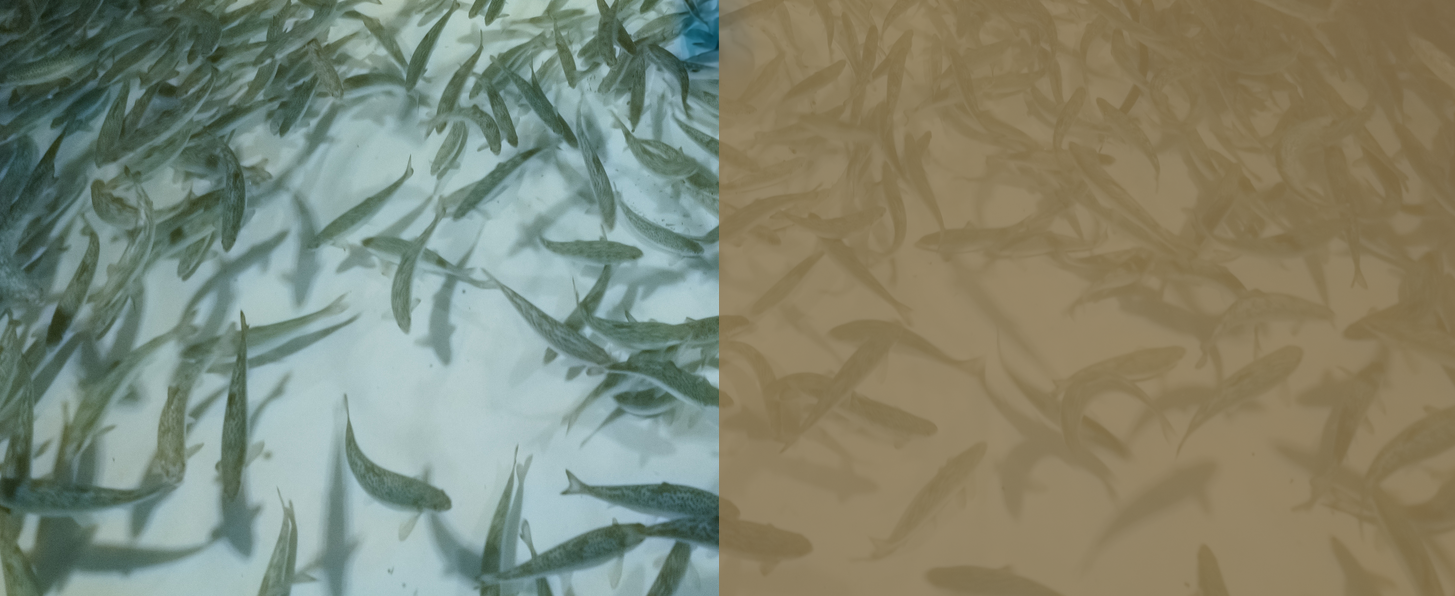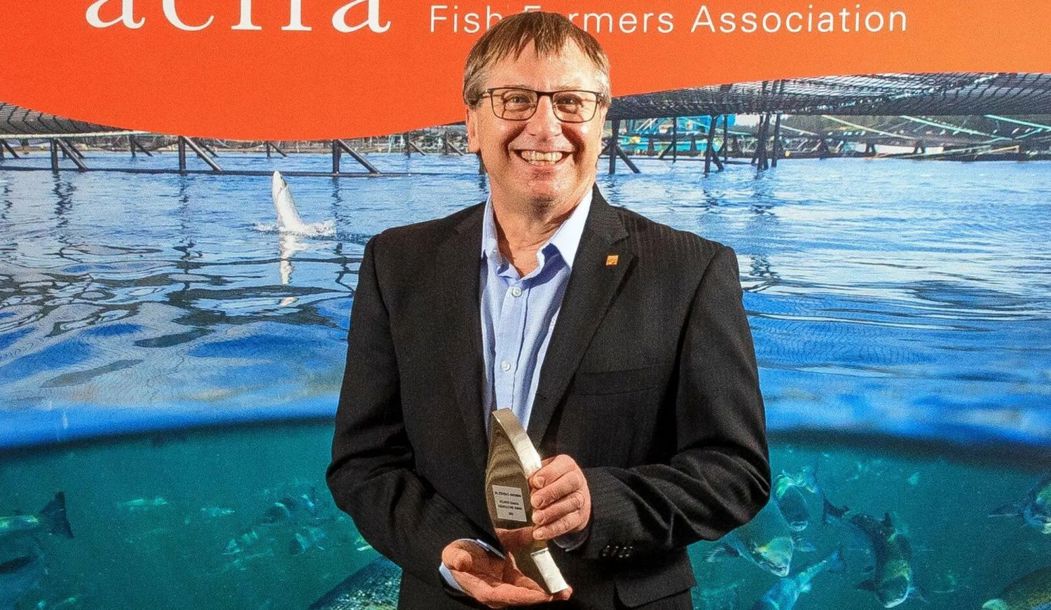One of the secrets to clean water in a RAS system is in the making of a good faecal binder. And Skretting knows all about this.
The importance of clean water in RAS systems

“Over the last 25 years, Skretting Aquaculture Innovation (AI) has been patenting, working on and continuously developing our revolutionary faecal binding solution," says Ingunn Stubhaug, senior researcher at Skretting Aquaculture Innovation. "We have implemented established methods and developed new ones to be able to evaluate the binding efficacy of binders and binder combinations. We have also considered the different life stages for optimal faecal binding and excellent growth.
In 2011, Skretting North America was a first-mover in offering customers a salmon feed for full grow-out in RAS, which contained our patented faecal binding solution. Steven Backman, a retired Skretting veterinarian who has been hailed as the 'grandfather of fish health veterinary medicine in Atlantic Canada', was there when this happened. We talked to him about the importance of clean water for fish being raised in RAS systems, how Skretting feed has contributed to this, and what he has heard from customers throughout the course of his career.
Skretting has always recognized the relationship between good water quality, animal welfare, and good growth efficiency. This is even more apparent with RAS-based farming methods.

An interview with Steven Backman
1. You're a trained veterinarian who has worked for Skretting for 36 years. You've spoken to countless customers and one of their pain points is water quality. Why is this so important?
Water is the life support medium for fish; not only providing oxygen, and removing carbon dioxide, but also carrying away metabolic waste products such as ammonia. In addition, it provides hydration, is a source of some minerals, and physically supports the body of the fish. What I hear from farmers is that the capacity of the system to support the health and well-being of fish is strongly influenced by the load placed on the system. A key factor in that is the waste from digestion. Soft faeces, which disperse quickly, pass through mechanical filter, increase particle load, which end up in the bio-filter increasing its workload and limit capacity. The particles also decrease efficiency of UV treatment systems and ultimately lead to less efficient production. One of the important breakthroughs in RAS diets is the ability to make the faeces more stable and resistant to dispersal. The result is faeces stay together longer facilitating removal by mechanical filters before loading the bio-filter or impeding UV systems. Lower organic loads in water reduces opportunity for bacterial growth, leading to less risk of gill diseases, lower metabolic demands on fish, and better growth efficiency. This supports fish welfare and lowers costs.
2. Customers in Skretting North America were among the first to use RAS feeds in grow out in 2011 and the first to use RCX feeds in 2017, with Optiline RCX Organic for Superior Fresh. What was it like, to be able to provide them with such products?
Skretting has always recognized the relationship between good water quality, animal welfare, and good growth efficiency. This is even more apparent with RAS-based farming methods. Farming is an underappreciated profession with farmers constantly balancing multiple tasks. RAS adds another layer of system management. Being able to provide feed products which help to increase their profitability and reduce their workload gives us a great deal of satisfaction.
3. RAS feeds don't just benefit the fish; there is also value for both the system and farmer too. Can you tell us more about that?
RAS is much more than a land-based facility to grow fish. It is a symbiotic relationship between the fish being raised and the biologic ecosystem purifying their environment. Both are critically dependent on each other. This relationship is further supported by sophisticated engineering systems forming the third leg of the tripod. Feed and feed quality can impact all three components. In traditional rearing systems the focus on feed was primarily to meet the requirements of the fish. In RAS, faeces particles can place a load on bio-filter increasing oxygen requirement, encouraging production of off flavour compounds and increasing energy use. By ensuring highly digestible feeds, we are supporting more optimal growth and lower feed conversation ratios. In addition, binding faeces with specialized faecal binders and manufacturing techniques allows greater removal of the waste material prior to entering the biological systems. This means lower energy use, lower oxygen demand, and less heat loss through CO2 stripping.
4. How is Skretting continuing to further improve and develop its products today?
Skretting pioneered specialized RCX feeds for intensive RAS systems and continues to lead the way, bringing advancements to RAS feeds through ongoing research at purposely constructed RAS research farms at Lerang in Norway and Pargua in Chile. At these facilities, novel ingredients can be assessed under real conditions to determine their effect on both the fish and the RAS system.
5. What has been your most memorable customer interaction?
In 2004, I had the opportunity to meet Dr Steve Summerfelt, a RAS systems engineer at the Freshwater Institute back in 2004. Dr Summerfelt was a pioneer in RAS engineering and a great mentor for me. He taught me a great deal about the functional attributes and limitations of these systems. At this time in North America, RAS systems were becoming a key production system in expanding salmon smolt production. After that meeting I was able to channel my newfound knowledge into the new Nutra RC line of fry feeds for RAS that Skretting introduced in 2011. Nutra RC allowed for significantly better water quality in RAS systems and quickly became a dominant force in the market. The next big challenge came with the further development of more intense RAS systems and full life cycle production. This added a whole new dimension to feed design due to the significantly higher volume of feed used in the system and reduced percentage of make-up water. In addition, some of these systems may be coupled with greenhouse plant production adding another level of constraints on feed design. In 2018, Dr Summerfelt joined the Superior Fresh operation as Chief Science Officer for a full-scale production RAS salmon farm and aquaponics system. In his new role he contacted me asking about our new RCX concept and asked if he could place an order. I must say I was excited for him to try this new feed but also a little nervous as he was one of the leading researchers and pioneers of these systems. For us at Skretting, failure was not an option. Needless to say, I was very happy to hear his positive response and observation that the feed was amazing. The fish loved it and grew very well and water quality remained perfect. Clearly our hard work and efforts paid off. Now as RAS systems continue to evolve, so must the feed design.